Updated on November 20, 2025 by Angelika Klein
With 59°F and sunshine, I couldn’t resist heading out for a day trip into Stauferland, the historic region between Göppingen and Schwäbisch Gmünd. It’s an area shaped by one of Southern Germany’s most influential dynasties. Its most famous members include Frederick I “Barbarossa,” Henry IV, and Frederick II. My day began at Lorch Monasterybeautifully situated on a ridge above the Rems Valley, and ended in Schwäbisch Gmünd, the oldest Staufer town.
At the Limes – the reconstructed Roman watchtower near Lorch
Before entering the monastery grounds, I stopped at the reconstructed Roman watchtowerright next to the parking area. This is where the Upper Germanic-Rhaetian Limesonce marked the northern frontier of the Roman Empire. Today, this section is part of the UNESCO World Heritage Site. The tower and a section of palisade fence were rebuilt in 1996 based on archaeological findings and offer an impressive idea of what the Roman border fortifications once looked like. Hard to believe that Roman soldiers patrolled this very ridge almost 2,000 years ago.
👉 Learn more about the Upper German-Rhaetian Limes in my article about Germany's UNESCO World Heritage sites.
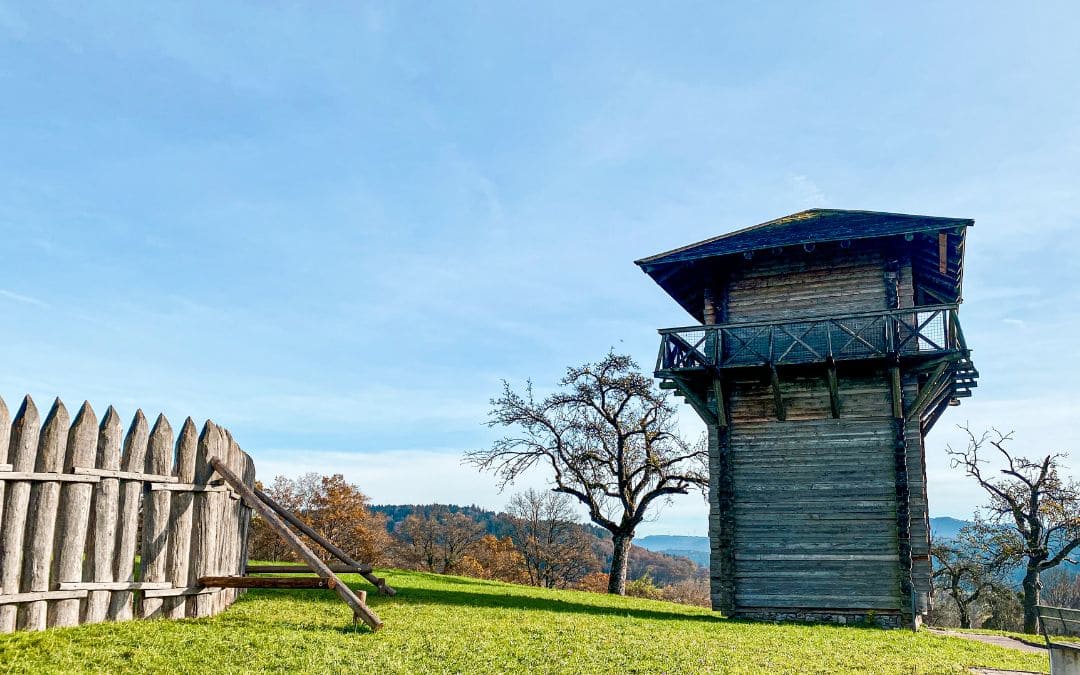
Staufer Falconry at Lorch Monastery
Right by the parking area you’ll find the Staufer falconry, whose entrance immediately caught my eye. The shows take place only on Saturdays, Sundays and public holidays – so it is quiet during my visit. On weekends, however, the flight demonstrations are a real highlight, especially for families.
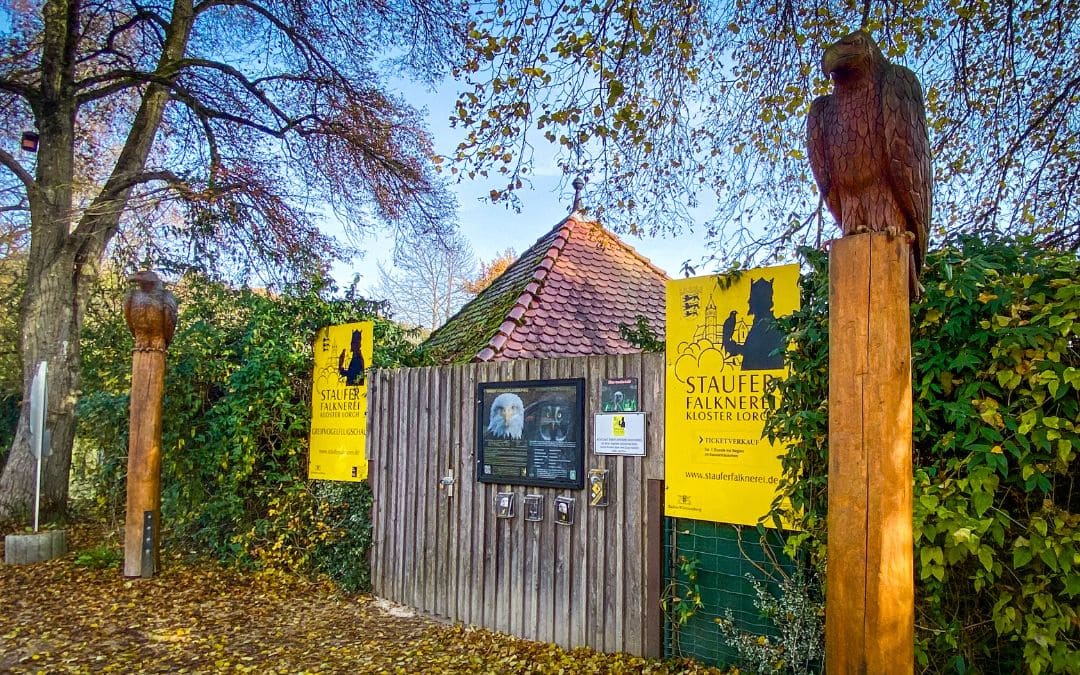
The Abbey – a half-timbered gem from the 16th century
One of the first buildings that impressed me was the half-timbered abbey house, built between 1525 and 1546. Today, this beautiful structure is used as a care home, but its ornate wooden framework still reflects the craftsmanship of the period.
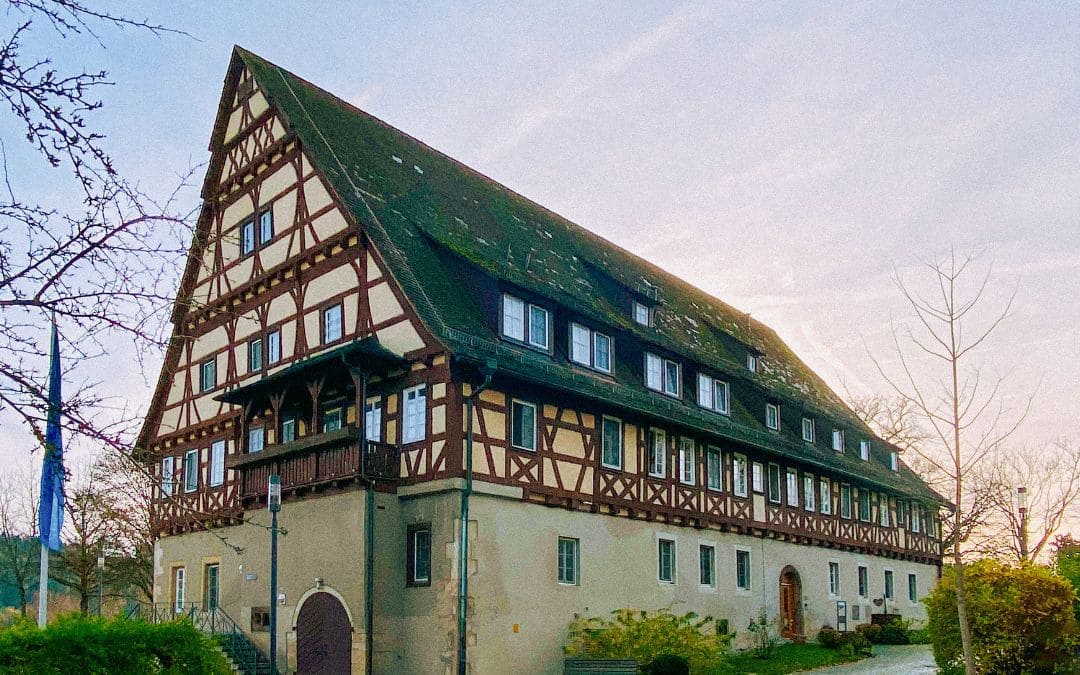
Luther oak, fountain and monastery church
The ornate fountain was made in 1779 by the ducal foundry in Königsbronn. It bears the coat of arms of the Duchy of Württemberg. The letters CHZW stand for „Carl Herzog zu Württemberg“. The branches at the top of the picture belong to the Luther oak, which was planted here in 1883 to mark the 400th anniversary of Martin Luther's birth.
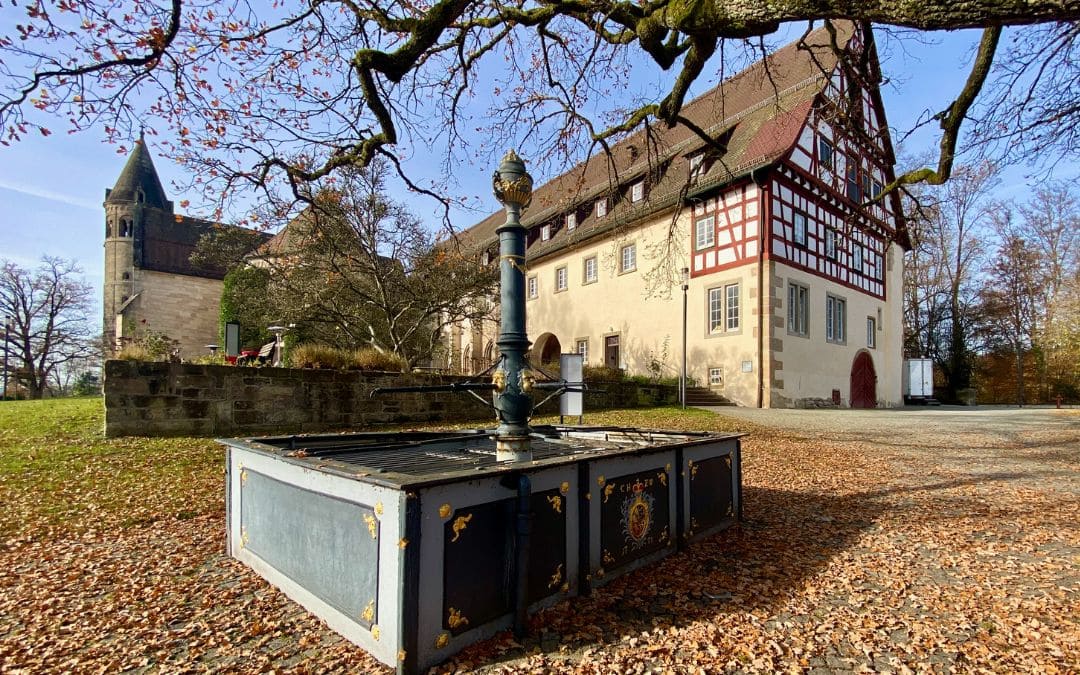
Monastery church with Marsilius Tower
The Monastery church is the heart of the entire complex. From the outside, it appears simple and sturdy, yet its Romanesque proportions and the mighty Marsilius Tower highlight its former importance. The monastery was founded around Marsilius Tower testify to the importance of the place. The monastery was built around 1100 by the Staufer dynasty as their family monastery and burial site – a spiritual and dynastic center of the ruling family.
👉 You can read more about Lorch Monastery in my guide to the highlights of the Swabian Alb.
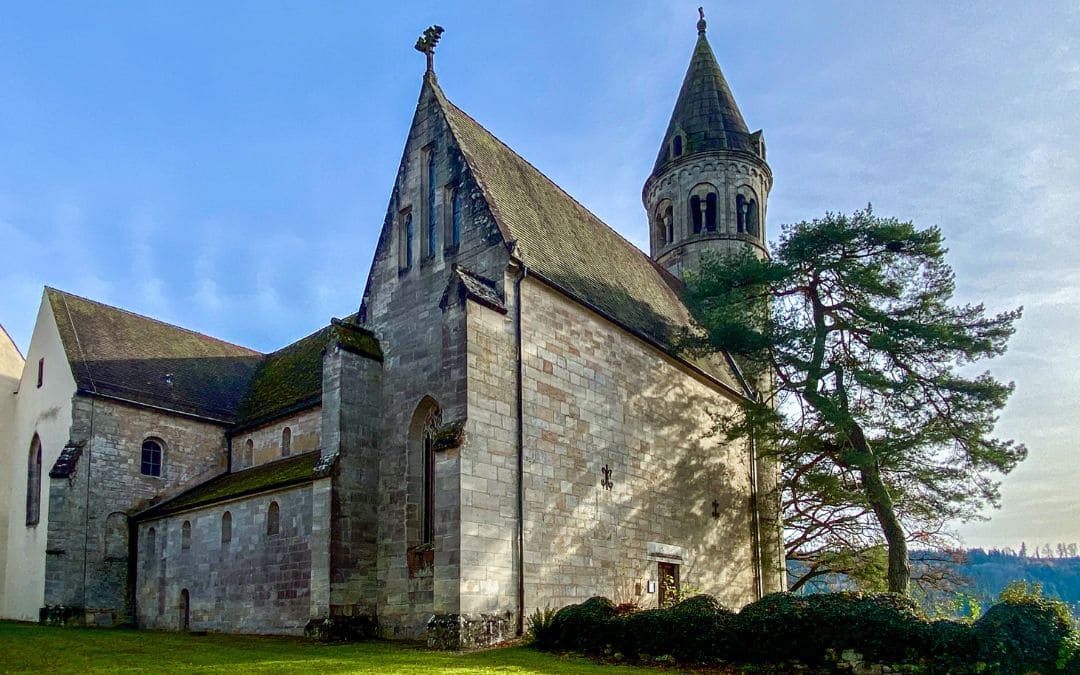
The Staufer Tomb
In the central nave is the Staufer Tomb, often mistaken for a single burial. In fact, it is a collective grave of all Staufers buried here. In 1475 , Abbot Nikolaus Schenk von Arberg ordered the opening of the existing graves; the remains were gathered and reinterred beneath the tomb.

View from the Marsilius Tower
A narrow spiral staircase takes you up to the Marsilius Tower – and rewards you with expansive views across the Rems Valley. A perfect spot to breathe deeply and enjoy the landscape.
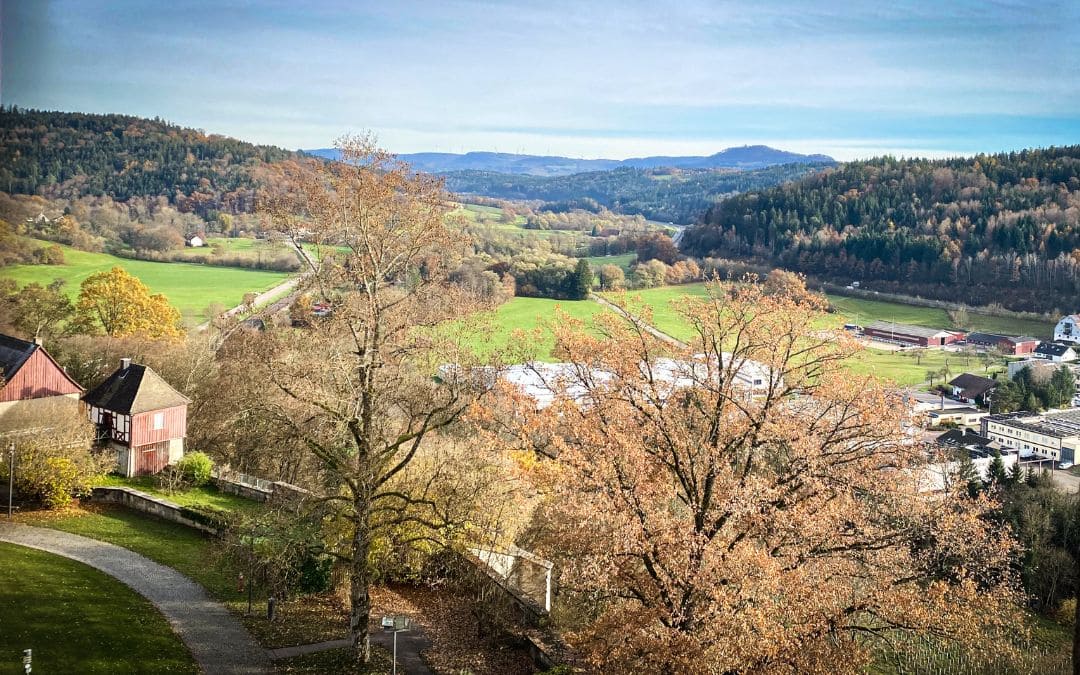
The monastery’s herb garden
At the end of my visit, I wandered through the herb gardenlovingly maintained and reminiscent of the monastery’s centuries-old tradition of herbal medicine. Even in late autumn, sage, thyme, and rosemary were still thriving.
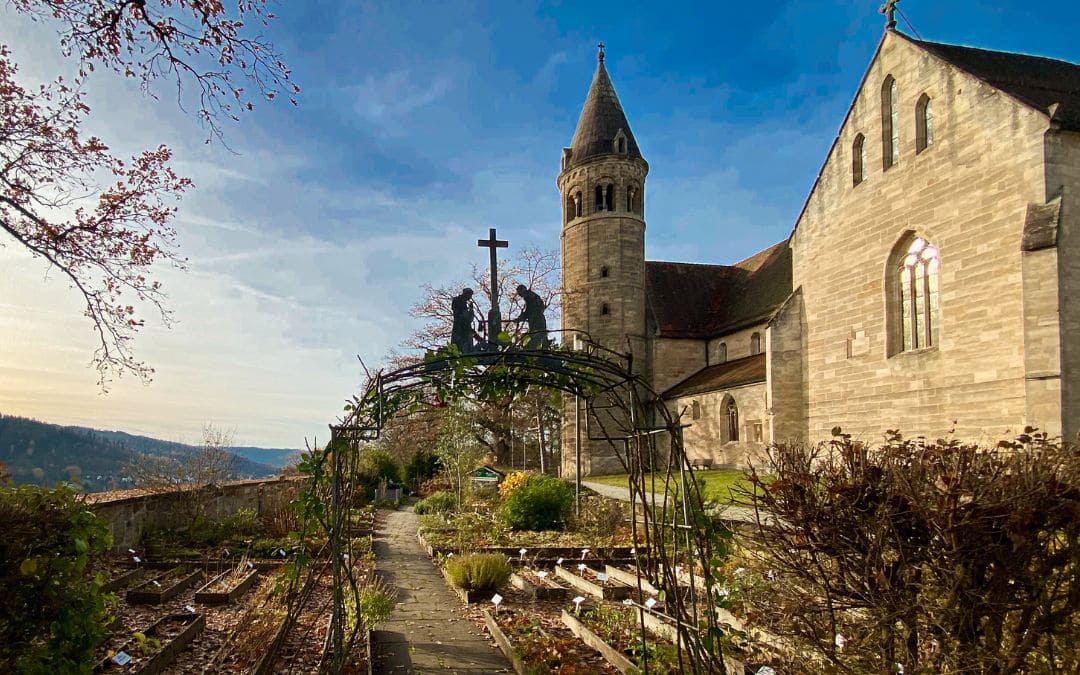
Market square in Schwäbisch Gmünd
After visiting the monastery, I drove on to Schwäbisch Gmünd, the oldest Staufer the oldest Staufer town. Its market square is considered one of the largest and most beautiful in southern Germany: spacious, lined with magnificent half-timbered and Baroque buildings, and graced by the Marienbrunnen fountain shimmering in the afternoon light.
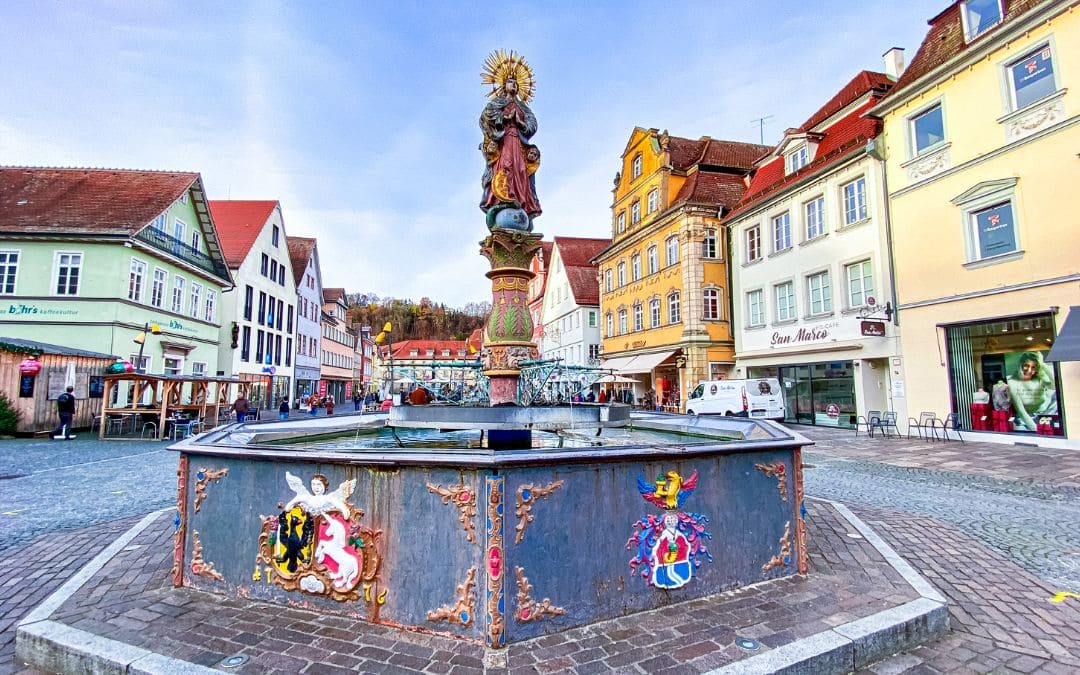
The Church of St. John
Right on the square stands the Johanniskirche(Church of St. John), one of the oldest hall churches in Württemberg. Its slender spire is a real eye-catcher, and from the top you have beautiful views of the old town rooftops. Since I had already climbed the tower at the monastery, I skipped the second ascent – and it was already too late to see the church interior. One more reason to return to Schwäbisch Gmünd!
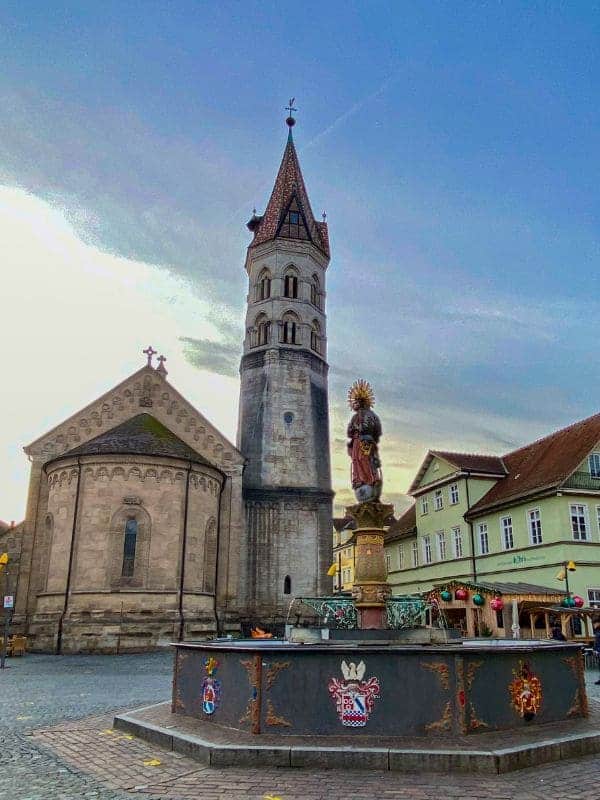
Lion Fountain and the Holy Cross Minster
Another highlight is the Lion Fountain with its postcard-perfect view of the Holy Cross Minster, the largest church building in the city. It is considered the first greater hall church in southern Germany – and the birthplace of a family of master builders who shaped Gothic architecture across Europe. Heinrich Parler the Elderborn in Schwäbisch Gmünd, played a key role in its construction. From this very site, the fame of the Parler family spread across Europe. Their later masterpieces include St. Vitus Cathedral and the Charles Bridge in Prague, St. Sebaldus in Nuremberg, Krakow's Town Hall and the minsters of Freiburg, Ulm and Basel. An extraordinary legacy with roots right here in Schwäbisch Gmünd.
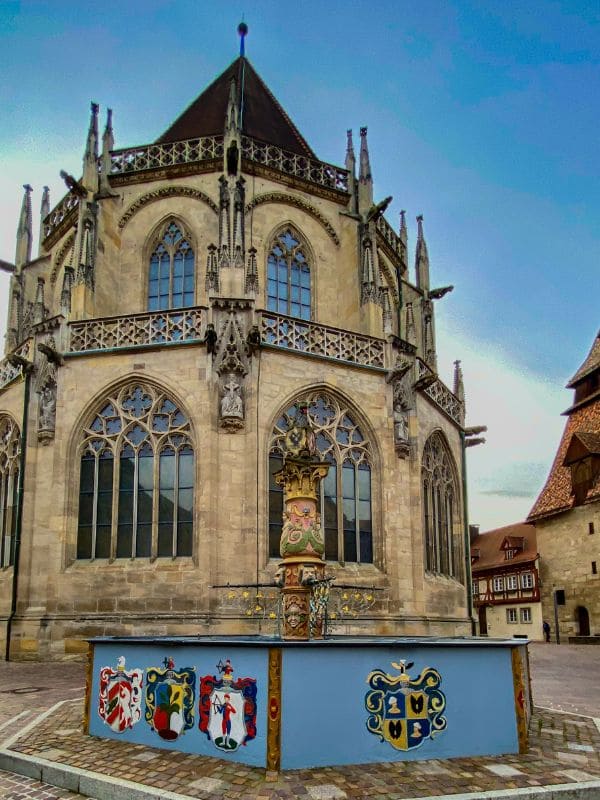
The Romanesque bell tower
The Romanesque bell tower next to the minster is an unusual sight. Originally built in 1227/28 as a residential tower for a local citizen, it was repurposed between 1502 and 1505 after both minster towers collapsed on Good Friday in 1497. Since then, it has served as the church’s bell tower.
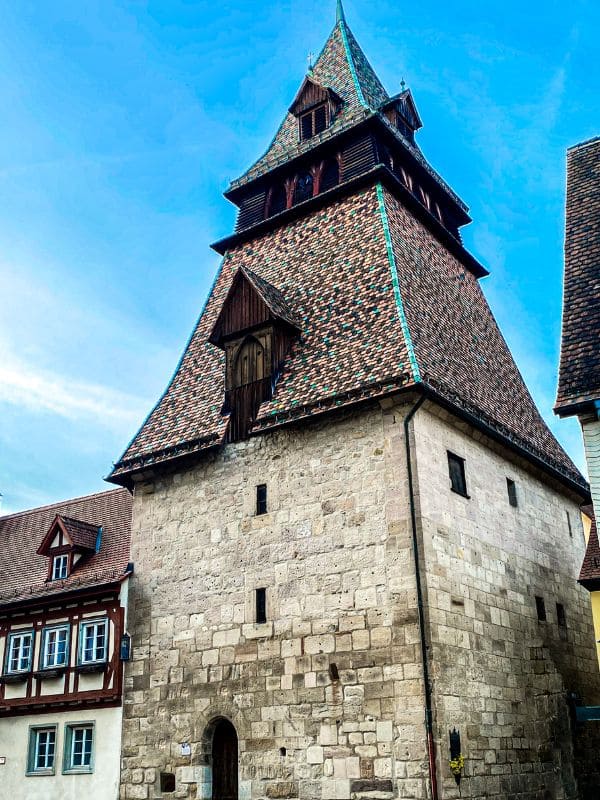
Conclusion
My trip to the Stauferland My day in Stauferland felt like a journey through time – from the Roman Limes to medieval monastery life and the historic charm of Schwäbisch Gmünd’s old town. Lorch Monastery captivated me with its silence and its wide views over the Rems Valley. And Schwäbisch Gmünd? A delightful mix of history and Mediterranean flair – the kind of town where you spontaneously find yourself ordering one more cappuccino than planned. I didn’t make it to Wäscherschloss or Hohenstaufen this time, but that just gives me the perfect excuse to return.
12 of 12 info
If you liked my article, then take a look at the blog Draußen nur Kännchen over. On the 12th of every month, you will find lots of interesting 12 out of 12 articles there.

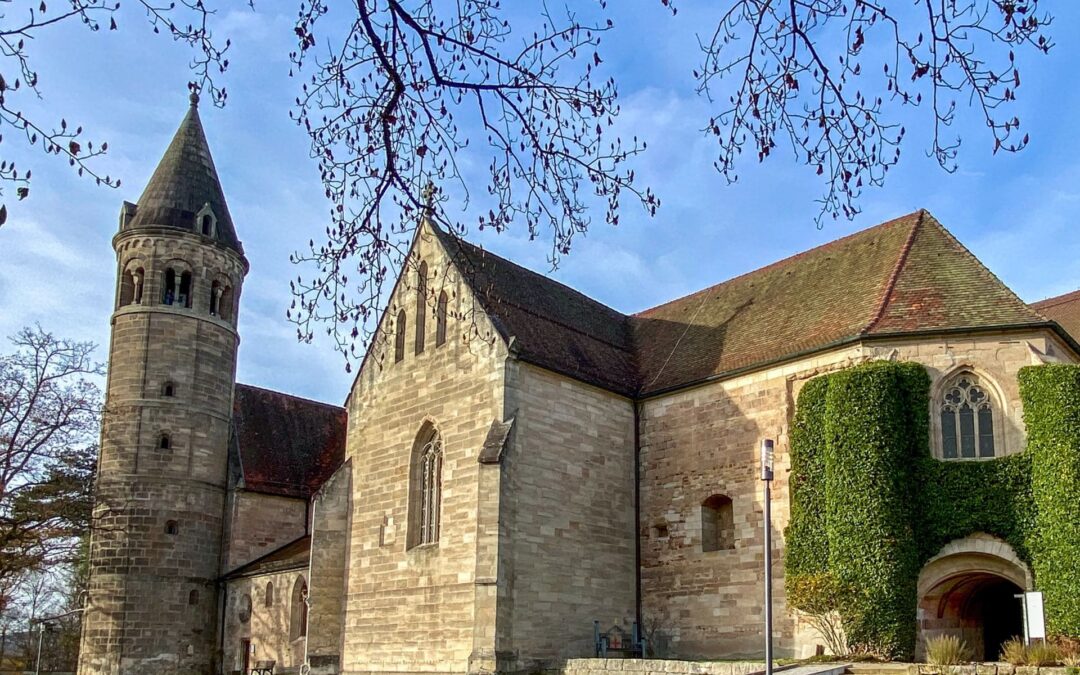
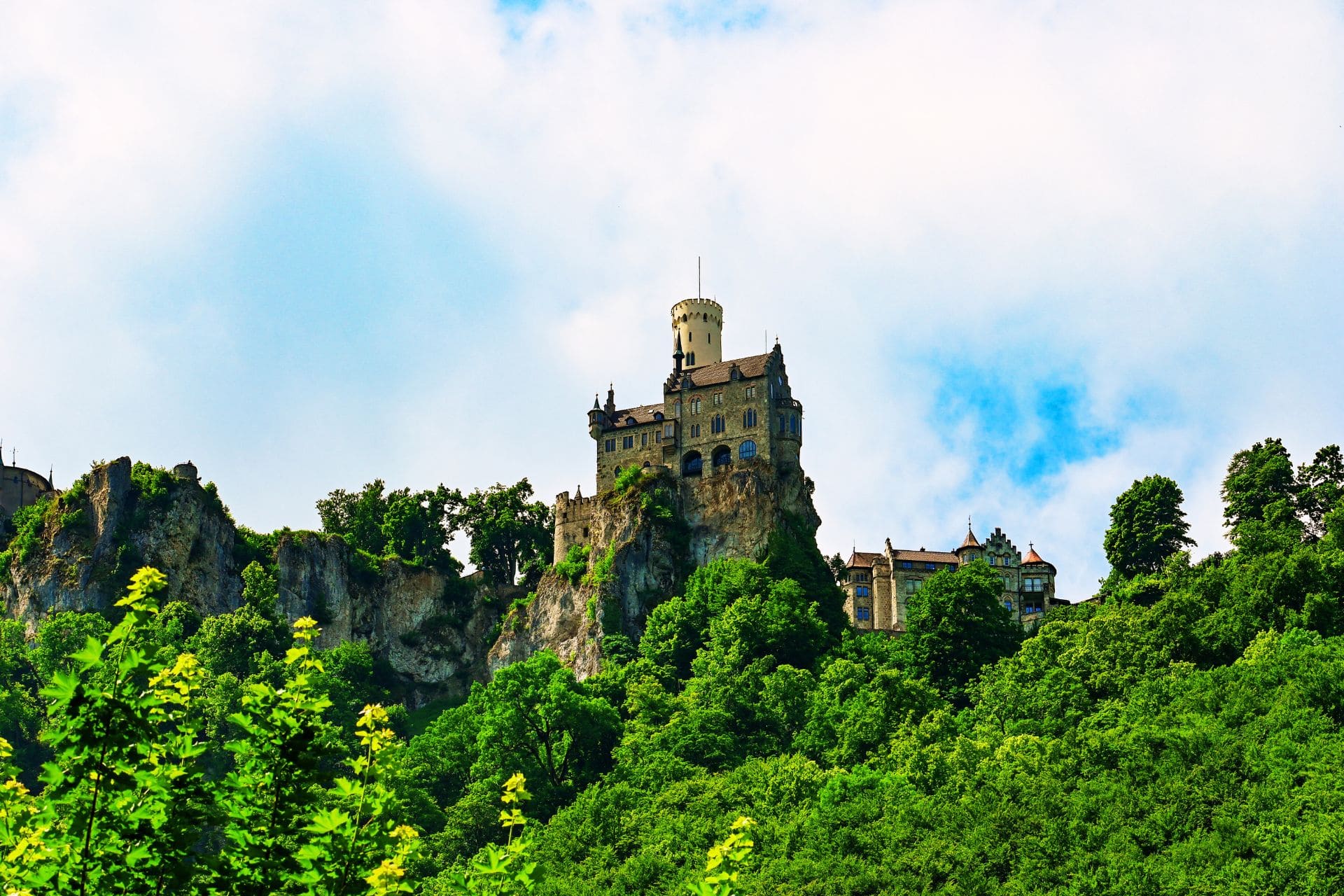
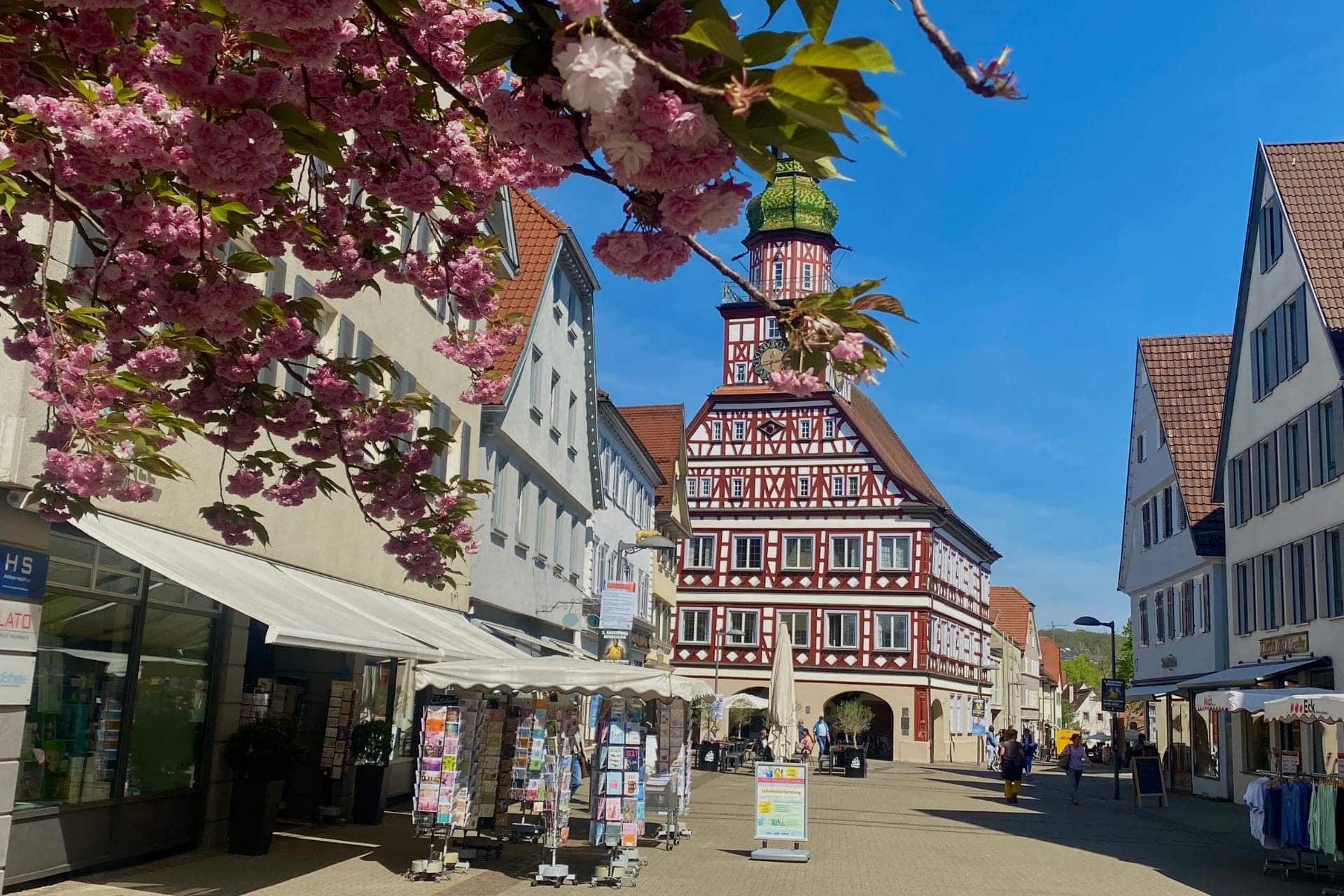
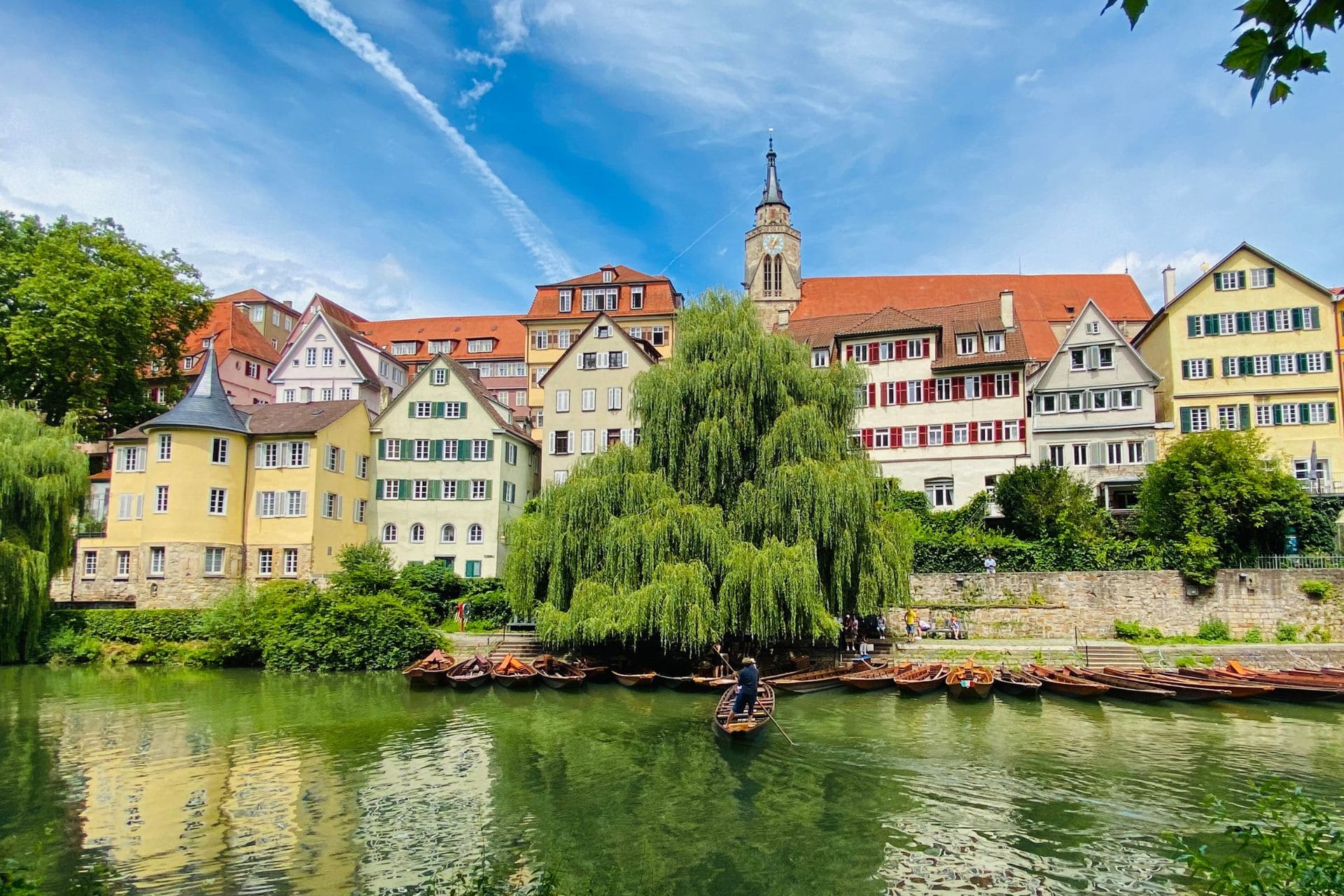
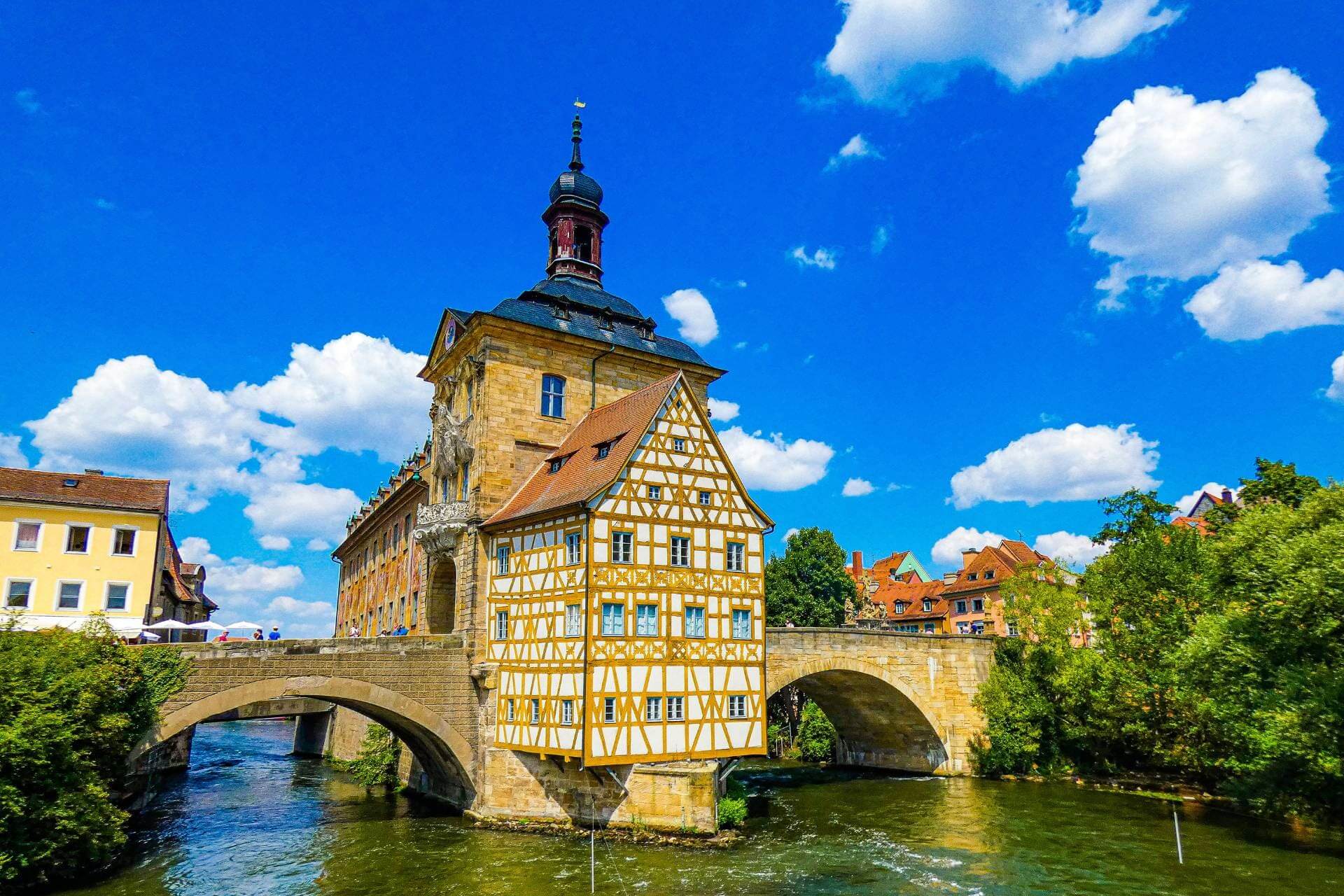
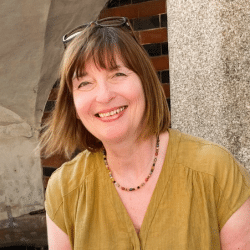

Dear Angelica,
Thank you for this interesting article! Thanks to you, I'm getting to know completely new corners of Germany. The market square in Schwäbisch Gmünd is really beautiful.
Many love greetings
Anja
Dear Anja,
Thank you very much for your nice comment. Schwäbisch Gmünd surprised me too - it was my first time there - and I'll definitely be going back soon, maybe for the Christmas market. Lorch Abbey is also a real highlight!
Warm regards,
Angelika